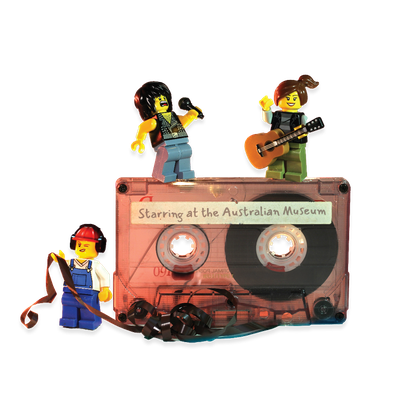Your search returned 2110 results
By Page Type
By Tag
- fish (966)
- blog (696)
- fishes of sydney harbour (401)
- First Nations (298)
- Blog (236)
- AMRI (169)
- archives (164)
- Eureka Prizes (146)
- Aboriginal and Torres Strait Islander (135)
- insect (126)
- Ichthyology (124)
- geoscience (109)
- minerals (102)
- climate change (99)
- podcast (94)
- Fish (91)
- Anthropology (89)
- International collections (80)
- Minerals Gallery (78)
- wildlife of sydney (78)
- Labridae (77)
- frog (74)
- gemstone (70)
- photography (66)
- history (63)
- Mollusca (60)
- gem (59)
- staff (59)
- Birds (56)
- Gems (56)
- Indonesia (56)
- education (55)
- shark (55)
- AMplify (54)
- people (53)
- earth sciences (50)
- exhibition (50)
- past exhibitions (50)
- Gobiidae (48)
- sustainability (46)
- Pomacentridae (45)
- Serranidae (44)
- lifelong learning (42)
- science (42)
- Earth and Environmental Science (41)
- Syngnathidae (41)
- Ancient Egypt (40)
- Bali (40)
- bird (40)
- dangerous australians (40)
-
Tattoo
https://australian.museum/learn/first-nations/unfinished-business-extended-content/unfinished-business-tattoo/As I was getting a drink, he just came in and poured petrol over me and lit me up. I was 6 years old when it happened.
-
The Kuuyang
https://australian.museum/learn/first-nations/unfinished-business-extended-content/unfinished-business-the-kuuyang/I am Koori inside my blood, inside my body. I am so proud because I am living in town and it’s called spirit land, and it’s called culture, freedom.
-
The Life Saver
https://australian.museum/learn/first-nations/unfinished-business-extended-content/unfinished-business-the-life-saver/I was raised to think and act white, which has been a hard thing to come up against and change in my life.
-
The Matriarch
https://australian.museum/learn/first-nations/unfinished-business-extended-content/unfinished-business-the-matriarch/It was not right that our little children were growing up in this environment, living their lives with unique and complex needs as a result of alcohol exposure in utero.
-
Sol Bellear AO
https://australian.museum/learn/first-nations/sydney-elders/sol-bellear/Sol was awarded the Order of Australia (AO) in 1999 for services to the Aboriginal community, particularly in relation to the administration and development of health policies.
-
Kooriculum: Beyond Terra Nullius
https://australian.museum/learn/first-nations/kooriculum-beyond-terra-nullius/Aboriginal Stories of Country welcome all visitors, ask people to listen and learn from them, to respect their country and in particular respect their sacred sites.
-
Indigenous science goes far beyond boomerangs and spears
https://australian.museum/learn/first-nations/indigenous-science/Indigenous science was critical for Indigenous people in solving any number of problems they faced and to capitalise on beneficial and sustainable opportunities presented by their environments and circumstances.
-
Blaschka glass models in 3D
https://australian.museum/learn/collections/museum-archives-library/blaschka-glass-models/blaschka-3d/Glass models from the 19th century as 3D digital objects
-
Tasmanian Aboriginal shell necklaces: A significant cultural practice
https://australian.museum/learn/first-nations/tasmanian-aboriginal-shell-necklaces/Shell necklace-making is a tradition that has continued uninterrupted by European colonisation.
-
Possum skin cloaks then and now – same same but different
https://australian.museum/learn/first-nations/possum-skin-cloaks-then-and-now/Revitalisation of Possum Cloak knowledges and practices as a living legacy in community, is a notable historically significant cultural regeneration phenomenon of our times.
-
Discover more
2025 Australian Geographic Nature Photographer of the Year
Special exhibition
Free entry
Now open -
Discover more
Unfinished Business
Special exhibition
Free entry
Now open -
Discover more
Wansolmoana
Permanent exhibition
Free entry
Open daily -
Find out more
Burra
Permanent kids learning space
Free entry
10am - 4.30pm![]()
-
Discover more
Minerals
Permanent exhibition
Free entry
Open daily![]()




